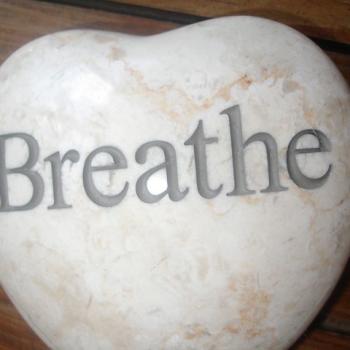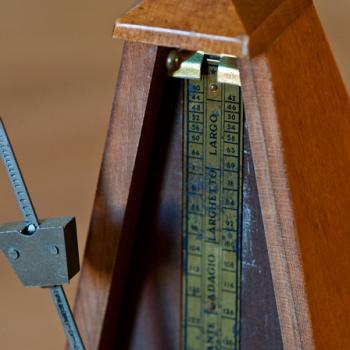
How Do Monks Communicate?
The monks in the monastic community where I am an oblate value stillness.
Many monasteries practice what is called the Great Silence. They practice silence from the conclusion of the final prayer service of the day until the next morning. It is common for monasteries to serve and eat breakfast in silence. Communities often develop a set of hand signals to help them communicate in silence.
The community where I am an oblate is a hermitage. One of the practical implications of that is the community’s stillness. People speak only in the bookstore and in long walks along the driveway.
The monks who live in silence are excellent at nonverbal communication. There are people I know because I see them every year when I am on retreat. I know them even though we have never spoken to each other.
The bookstore at the monastery has a telephone. The first time I visited the rule was that a person did not have a reservation until they had talked to a monk. Leaving a message was not enough to make a reservation. I remember calling a few times before a monk answered the phone.
Many monks also communicate in writing. Monks write books and letters. Some monasteries have websites and some monks send email. The community where I am an oblate has a Facebook page.
It is one of the ironies of monastic life and history is that as people retreat to the monastery the world follows them. One of the great gifts of monastic life has been to strengthen communication.
Monasteries Strengthening Communication
Historically, monasteries collected manuscripts for material with which they could practice writing. Monastic collections gave monks written material they could copy and illuminate. Monastic communities produced devotional materials as well as copies of historical documents. It is believed we have copies of ancient Greek and Roman texts only because monasteries preserved them.
There are monasteries which continue this contribution to the world to this day. Saint John’s Abbey in Minnesota collects ancient texts digitally, preserving them for future generations.
Many monasteries find ways to use their unique position as places of listening to strengthen communication. Groups hold retreats and seminars at monasteries to connect the past with the future. People who find it challenging to listen to each other find new ways to communicate.
The monks I know are excellent listeners and strong communicators.
In addition to valuing stillness and listening, monks appreciate communicating at a deep level.
Monastic life is organized to provide time for reflection and awareness. Monks invest time and effort in facing their fears and getting to know their true selves well. They reflect on what they read and the life around them, then apply what they learn.
As monks develop their relationships to themselves the value of communication becomes clearer to them. They become better listeners and more effective at sharing themselves with people around them.
Monks use a variety of methods to communicate the depth of their understanding.
What We Can Learn and Apply From Monks
Our everyday lives are different from people practicing monastic life. We are surrounded by distractions from silence. Our attention is focused on whatever is directly in front of us. Often we are not aware of the drama and power of the moment we are living as we are living it. Our true selves are often relative strangers to us and we only gradually get to know ourselves.
We do not organize our time to give us opportunities to reflect. Our experience of each day is often urgent and stressful. It is a challenge for us to remember the lessons we learn each day.
The way we communicate is often difficult to understand. Even we ourselves, when we take the time to listen, may find it a challenge to recognize what we are trying to say.
What can monks teach us about communication?
The first essential step is We need to have something to say.
We are often in such a hurry to express ourselves we do not take the time we need to complete our thinking. It is easy to jump to conclusions, especially as we approach communication as a competition. We seem to feel the less time we spend listening and reflecting the faster, and better, we communicate.
Communication is not a race, or any other form of competition.
The next key step is We need to learn to listen.
Listening is more than pausing for more breath or thinking about what we will say next. More than half of communication is paying attention to what other people are saying.
We listen by being open to ourselves, to each other, to the world around us. The monks I know practice disciplines which help them develop the openness to listen.
Practicing Communication
Monks give us examples of how to communicate even when they do not speak. Their gestures, writing, and glances communicate the wisdom they have to share. An appreciation of listening and understanding of themselves help them share.
The monks I meet offer hospitality and insight even when we do not exchange words.
They know they have something to say and know how to listen. Whether through ancient manuscripts, eye contact, or emails, monks share their message.
The same can be true for us. As we take time to reflect and know ourselves well we become more adept at listening. We invest our time and effort in what we value and our investment returns to us.
There are ways we can disconnect from the distractions which overrun our lives. We learn to pause for reflection, to practice listening, to get to know who we truly are.
One essential step at a time we build our communication skills.
By following the examples of monks we can communicate more effectively in our worlds.
How can our communication become more monastic today?
What disciplines can we practice to help us develop the openness to communicate?
[Image by Muffet]
Greg Richardson is a spiritual life mentor and leadership coach in Southern California. He is a recovering attorney and university professor, and a lay Oblate with New Camaldoli Hermitage near Big Sur, California. Greg’s website is StrategicMonk.com, and his email address is [email protected].












